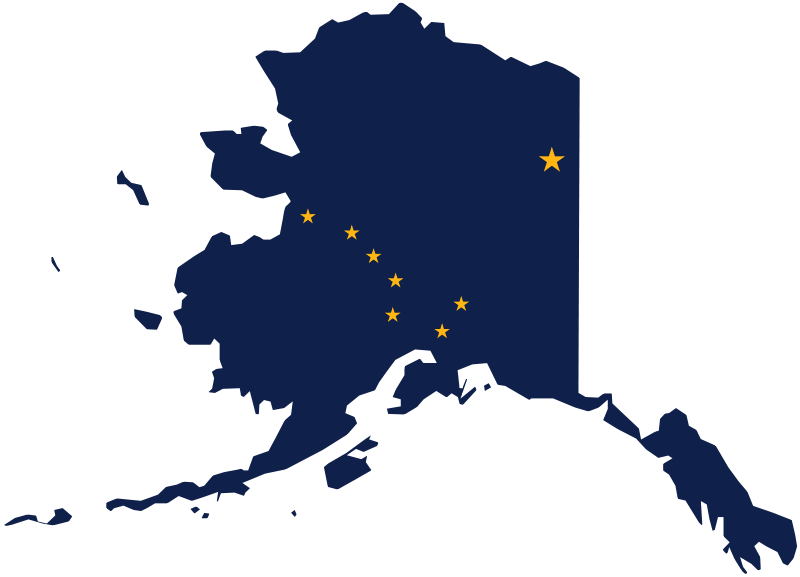Alaska Ballot Measure 2 was approved with 50.5% of the vote reported as of November 17. Ballot Measure 2 was designed to make several changes to Alaska's election policies, including:
* replacing partisan primaries with open top-four primaries for state executive, state legislative, and congressional offices;
* establishing ranked-choice voting for general elections, including the presidential election, in which voters can rank the candidates; and
* requiring persons and entities that contribute more than $2,000 that were themselves derived from donations, contributions, dues, or gifts to disclose the sources of the contributions.
Under Ballot Measure 2, Alaska is the first state to adopt top-four primaries for state executive, state legislative, and congressional offices. Like the top-two systems in California and Washington, candidates run in a single primary election, regardless of a candidate's party affiliation. Unlike in California and Washington, where the two candidates who receive the most votes move onto the general election ballot, Ballot Measure 2 moves the four candidates who receive the most votes onto general election ballots.
At the general election, voters elect state and federal candidates using ranked-choice voting. For state executive, state legislative, and congressional elections, voters rank the four candidates that advanced from their top-four primaries. A candidate needs a simple majority of the vote (50%+1) to be declared the winner of an election. If no candidate wins a simple majority of the vote, the candidate with the fewest votes would be eliminated. People who voted for that candidate as their first choice would have their votes redistributed to their second choice. The tabulation process would continue in rounds until there are two candidates remaining, and the candidate with the greatest number of votes would be declared the winner.
Ballot Measure 2 gives ranked-choice voting proponents their second statewide win after Maine approved Question 5 in 2016. In 2020, Massachusetts also voted on a ranked-choice ballot measure, but it was defeated. On November 3, local ranked-choice voting ballot measures were approved in Albany and Eureka, California; Boulder, Colorado; and Bloomington and Minnetonka, Minnesota.
Alaskans for Better Elections led the campaign in support of Ballot Measure 2. Through October 24, 2020, the campaign's committees had raised $6.8 million, with contributions from several organizations that seek to change election policies. Action Now Initiative was the largest donor, providing $2.8 million. Unite America was the second-largest donor, providing $2.7 million. Former Rep. Jason Grenn (Independent) was chairperson of the campaign. Green described the ballot initiative as "kind of a three-pronged attack on making our elections better.” Speaker of the Alaska State House Bryce Edgmon (Independent) supported Ballot Measure 2, as did the Alaska Libertarian Party and former Massachusetts Gov. Bill Weld (R).
Defend Alaska Elections led the campaign in opposition to Ballot Measure 2. Through October 24, Defend Alaska Elections, along with the Protect Our Elections PAC, had raised $472,836. The Alaska Republican Party provided $50,000 to Defend Alaska Elections. The Republican State Leadership Committee also provided $50,000. John Sturgeon, the chairperson of Defend Alaska Elections, described Ballot Measure 2 as “a 25-page-long mess that isn’t fair, democratic, or needed.” Former U.S. Sen. Mark Begich (D) and former Gov. Sean Parnell (R) opposed Ballot Measure 2.
Ballot Measure 2’s system of top-four primaries and ranked-choice voting general elections will be first used in 2022, which includes the gubernatorial, U.S. House, and a U.S. Senate election in Alaska.


